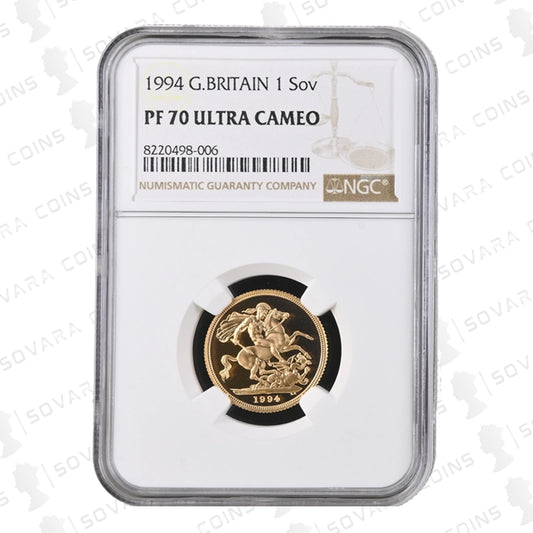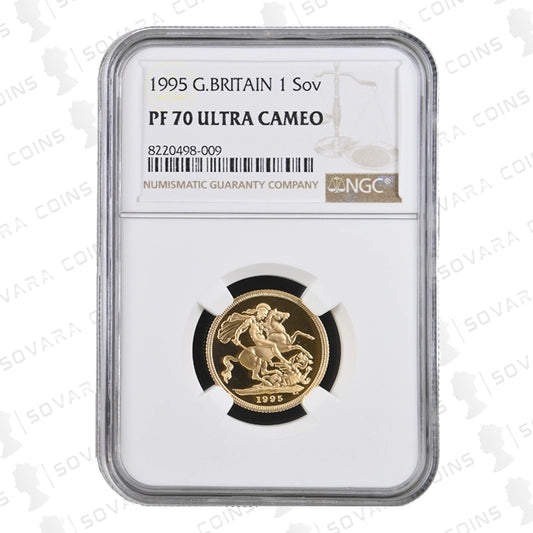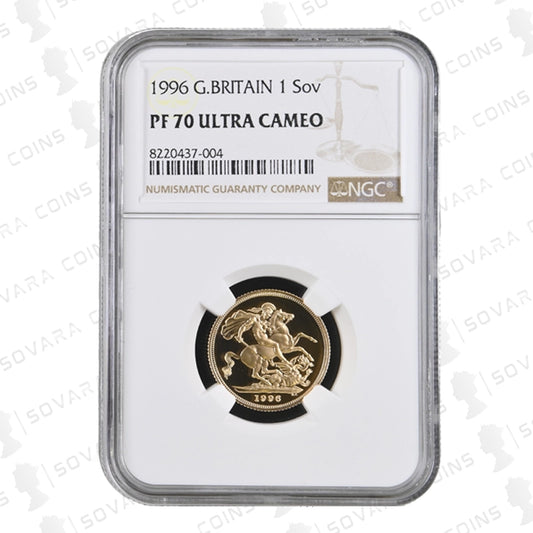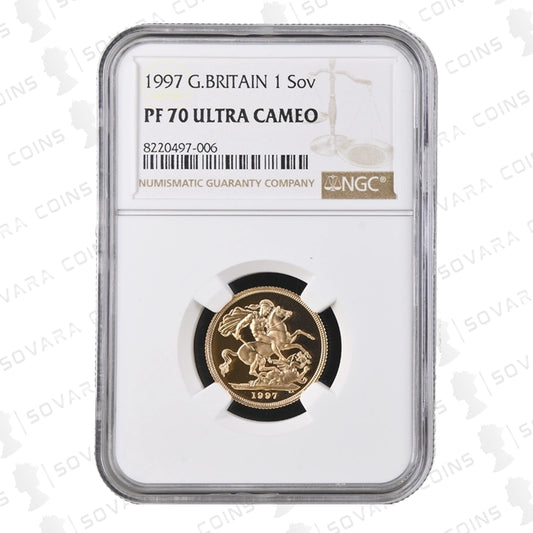
The Ultimate Guide To Gold Proof Coin Conservation
Share
Why Conservation Exists For Gold Proof Coins
Modern proof coins are struck to exacting standards, but their finishes are fragile. Over time, even boxed proofs can develop haze, box lint, fingerprints, or residues from capsules and foam. Older 22ct proofs can also show microscopic spotting from the alloy. Conservation is the targeted removal of removable contaminants so the surfaces look as struck. It is not polishing or re-finishing and it should not alter the metal.
The goals
- Improve visual appeal so fields look clean and design frost is crisp
- Remove harmful substances that could worsen with time
- Maximise the chance of a fair grade when submitting to a third party
- Stabilise the coin so it stores well for the long term
Typical problems conservation can address
- Haze or fogging on mirror fields
- Fibres, dust and box lint trapped inside capsules
- Fingerprints and skin oils
- PVC residue from old flips
- Adhesive traces from labels or tape
- Minor organic residues and liquid spots
Problems it cannot fix
- Hairlines and wipes in the metal
- Scratches, dings, rim knocks
- Subsurface spots from the alloy that have stained the metal
- Weak strike or die polish lines
Conservation vs Cleaning
Conservation uses non abrasive, chemically appropriate methods to lift contaminants without changing the original surface. Cleaning often means friction, dips, or abrasives that remove or alter metal. If a process would change the as-struck surface, it is not conservation.
Quick rule of thumb: if you can see new hairlines after the process, it was cleaning, not conservation.
How Professional Conservation Works Step By Step
Below is a typical workflow used by specialist teams like NGC Conservation or PCGS Restoration. Individual steps vary by coin and contaminant.
-
Intake and triage
Verify coin, note visible issues, photograph before condition
Decide whether conservation is appropriate and what risks exist
-
Non contact dry cleaning
- Use filtered air, antistatic brushes, or micro spears to lift loose fibres and dust
- No rubbing of the fields
-
Targeted solvent treatment
- Test an inconspicuous area to choose the safest solvent
- Common lab grade solvents include ultrapure water, acetone or xylene for organic residues
- Soak or spot apply to lift contaminants
-
Rinse and neutralise
- Use high purity rinses so no minerals are left behind
- Control temperature and time to avoid stress to the coin
-
Gentle mechanical assistance
- If required, use soft, single use swabs under magnification to tease off stubborn residue
- No circular rubbing and no abrasive media
-
Drying and inspection
- Dry with filtered air in a clean hood
- Inspect under multiple light angles at 5x to 10x
- Photograph after condition and compare with the before image
-
Encapsulation or return
- If combined with grading, the coin moves straight to grading and encapsulation
- If returned raw, the coin is placed in inert packaging
Why Collectors Choose Conservation
For grading
- A removable fingerprint or haze can hold a proof back from PF70 or PF69. Removing it may allow the coin to realise its true technical grade.
- Eye appeal matters. Two technically equal coins can receive different designations if one presents cleaner and brighter.
For long term care
- Some contaminants are reactive and can worsen. Removing them now prevents future issues.
- Capsules and boxes can shed fibres or outgas plastics. Stabilising the coin helps it store well.
For presentation and resale
- A clean, haze free proof photographs better and is easier to sell.
-
Buyers are more confident when any removable issue has been professionally addressed.
Pros And Cons Of Conservation
Pros
- Can improve grade outcomes when issues are truly removable
- Restores the intended look of mirror fields and frosted devices
- Slows or prevents further deterioration from reactive contaminants
- Increases buyer confidence and saleability
Cons
- Fees and shipping add cost and risk
- No guarantee of grade change
- Some residue is actually hiding hairlines. Once removed, lines may be more visible
-
Over treatment or amateur attempts can cause irreversible damage
Should You Conserve Your Coin A Decision Checklist
Use this quick framework before you submit:
- Is the issue clearly on the surface and likely removable, such as haze, lint or light organic residue
- Is the coin already high grade where a small improvement could matter
- Is the coin genuinely scarce or high value
- Do before photos show something worth addressing
- Will the fee be justified if the grade does not change
If you answer yes to most points, conservation is worth considering.
DIY Or Professional
For modern gold proofs, the safest path is professional conservation. If you choose DIY, follow strict rules:
- Never rub, polish or use cloths. That creates hairlines
- Never use household cleaners or dips. They can strip frost or leave films
- Only use lab grade solvents in a ventilated space away from ignition sources and only if you truly understand the risks
- Handle by the edges with powder free nitrile gloves and work over a soft, inert surface
When in doubt, do nothing and speak to a professional.
Packaging And Storage After Conservation
- Store in inert capsules or slabs
- Keep the coin in a cool, stable, low humidity environment
- Avoid PVC flips, adhesive labels and foams that can outgas
- Add silica gel packs to storage cases and change them periodically
Myths And Mistakes To Avoid
- Myth: conservation always boosts the grade. Reality: it only helps when contaminants were the limiting factor
- Myth: bright shine equals better. Reality: proof surfaces should retain original frost and mirrors, not a polished look
- Mistake: wiping off a fingerprint. Oils can etch fast. Wiping adds hairlines. Leave it and seek help
- Mistake: storing in PVC flips or near foams that outgas
Quick Reference Table
| Issue | Likely Removable | Risk Level | Notes |
|---|---|---|---|
| Dust or fibres | Yes | Low | Non contact removal |
| Light haze | Often | Low to medium | Solvent and rinse |
| Fingerprint (fresh) | Sometimes | Medium | Older prints can etch |
| PVC residue | Often | Medium | Needs solvent expertise |
| Milk spots | Rare on gold | Medium | More common on silver |
| Hairlines | No | High | Damage is permanent |
Final Thoughts
Conservation is about doing the least necessary to return a coin to its as struck appearance and to stop problems from getting worse. When used thoughtfully, it protects value, supports fair grading, and keeps your collection looking its best. When in doubt, seek professional advice and never risk the original surfaces.











